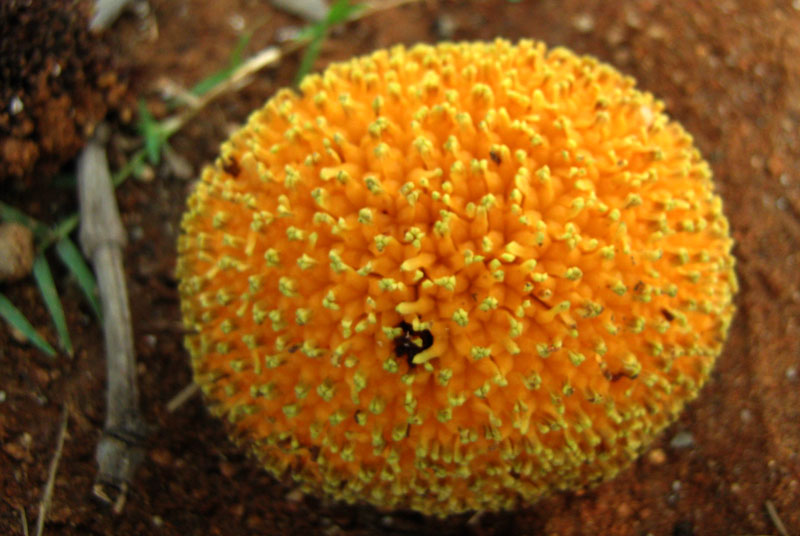- Flowers by Name A >Anthocephalus Cadamba
Anthocephalus Cadamba

Introduction:In India kadamba has a mythological association with Lord Krishna. About 2000 years ago vast kadamba forests existed in the vrindaban region, some of which are still thre today. In Greek anthos means ‘ a flower’ and kephalos ‘a head’ in allusion to the compact heads of flowers
Description: A tall deciduous tree having a perfectly straight trunk, marked with numerous longitudinal cracks. Branches are horizontal with a tendency to droop and form a dense rounded crown of foliage. Leaves much larger in young plants, elliptic-oblong or ovate, acute or shortly acuminate, dark glossy green above with paler veins, lighter undersurface and usually covered with fine down. Flowers numerous, small, scented, borne on flower-heads, solitary, globose, borne on peduncle at the end of the twig; calyx lobes oblong and persistent, pale greenish and cream-colored; 5 petals partially joined to form a small funnel-shaped tube, glabrous and orange in colour and as they grow outwards beyond the calyces the heads become compact orange spheres 5-8 cm in diameter.
Fruit composite, consisting of a fleshy globular ass on which are inserted the compact fruits of individual flowers separately. On ripening they turn yellowish or brownish and attain 5-6 cm in diameter. Seeds small and numerous.
Gardening: It grows best in warm and humid climate and rich loamy soil. The plant is propagated from seed. The growth is rapid in the first 6-8 years and the tree attains maximum size in about 20 years. Flowers appear from June to August. The tree comes to flowering when 4 –5 years old. This beautiful tree is admired primarily for its golden ball of flowers with delicate scent and secondarily, for its mythological connections. It is often planted near houses and on roadsides as a shade tree, and is very suitable for this purpose owing to the dense shade given by its handsome, large foliage, its straight trunk and stately outline.
Propagation: Seeds
Flowers & Plants by Categories



































